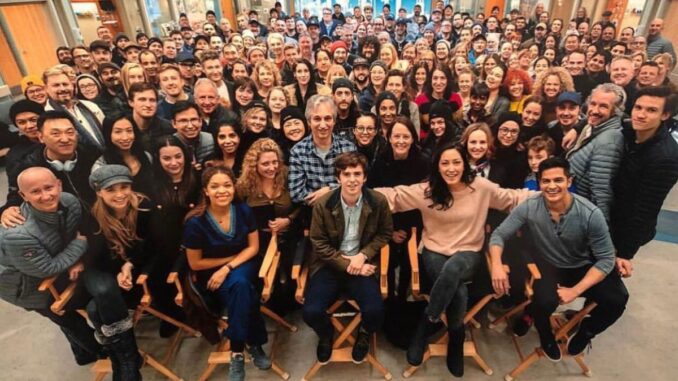
Every television series has its emotional peaks—the moments that make your chest tighten and your eyes well up. The Good Doctor is no exception. While it’s known for intense surgeries and clever diagnoses, some of its most unforgettable scenes happen far away from the operating table. Among them is one moment so raw, so painfully human, that it stands as a turning point not only for Dr. Shaun Murphy but for everyone watching.
Without revealing exact spoilers, this particular moment comes unexpectedly, in the middle of what seems like an ordinary storyline. Shaun is confronted with a loss that no skill, no preparation, and no medical miracle can undo. For a man who lives by the precision of facts, the reliability of knowledge, and the control of a surgeon’s hand, this helplessness hits harder than any personal attack or professional setback.
What makes the scene heartbreaking isn’t just the loss itself—it’s the way Shaun processes it. His initial reaction isn’t loud or dramatic; it’s quiet. His face goes still, his words falter, and for a moment, the confident, brilliant doctor we know is gone. In his place stands someone vulnerable, almost childlike, trying to make sense of a world that has just proven it can be cruel without reason.
This silence speaks volumes. In real life, grief often doesn’t arrive in neat, cinematic breakdowns—it settles in quietly, disrupting your thoughts, numbing your senses. Shaun’s reaction mirrors that reality. And because of who he is—someone who struggles with expressing emotion in conventional ways—this quiet devastation is even more striking. We don’t just see his grief; we feel the weight of the words he can’t say.

The beauty of The Good Doctor is that it never treats Shaun as a character to be pitied. Instead, moments like this deepen our understanding of him. He’s not just a surgeon with autism and savant syndrome; he’s a man navigating the same universal experiences we all face—love, loss, regret, and the search for meaning. This heartbreak strips away the labels and leaves us with a truth that transcends diagnosis: pain is part of being human.
From a storytelling perspective, this scene is a masterclass in restraint. There’s no swelling music to manipulate the audience’s emotions, no overdone monologue to explain what he’s feeling. The camera lingers on his face, letting the smallest shifts in expression tell the story. The quietness forces the viewer to lean in, to connect the dots between what we’ve seen him endure and what this moment will mean for his future.
And it does change him. In the episodes that follow, we see the subtle ways this loss reshapes Shaun. His interactions with patients become tinged with a deeper empathy. He hesitates more before making decisions that could affect someone’s life, not because he doubts his skill, but because he understands more keenly the ripple effects of every choice. His relationships shift as well; he lets people in a little more, though always on his own terms.
Why does this moment matter so much? Because it challenges the myth that strength means being unaffected. In medicine, doctors are often expected to remain detached, to shield themselves from the emotional toll of their work. But The Good Doctor shows us the opposite: that allowing yourself to feel—to grieve, to be vulnerable—is not a weakness. It’s what keeps you human in a profession that can easily strip away humanity.
For the audience, this moment is a mirror. We’re reminded of times when we’ve faced something beyond our control, when logic couldn’t fix the problem and all we could do was endure. Watching Shaun navigate his grief allows us to reflect on our own, perhaps even to find some measure of comfort in knowing that pain is universal, even for those who seem invincible.
In the end, this scene doesn’t just make us cry—it makes us think. It stays with us because it’s not about a singular event, but about what it represents: the fragility of life, the inevitability of loss, and the quiet courage it takes to keep going. And that’s why it matters—not only within Shaun’s story, but in the stories of everyone who’s ever loved and lost.
